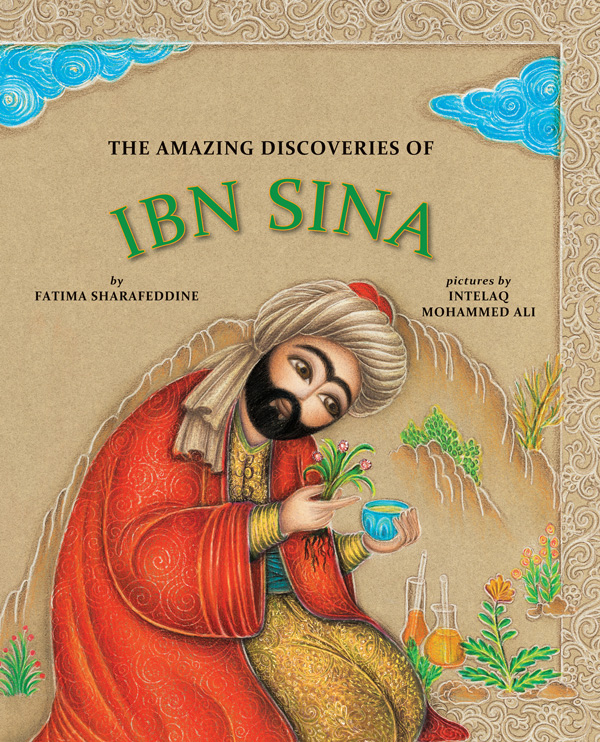
Jean-Léon Gérôme, The Duel After the Masquerade
Jonathan Gottschall is a Distinguished Fellow in the English Department at Washington & Jefferson College. His research at the intersection of science and art has frequently been covered in outlets such as The New York Times Magazine, The New York Times, Scientific American, The New Yorker, The Atlantic, The Chronicle of Higher Education, Nature, Science, and NPR. His book The Storytelling Animal: How Stories Make Us Human, was a New York Times Editor’s Choice Selection and a finalist for the LA Times Book Prize. His latest book is The Professor in the Cage: Why Men Fight and Why We Like to Watch.
* * *
Harris: Jonathan, you and I seem to have had similar midlife crises: We each woke up one morning and were suddenly very interested in violence, self-defense, martial arts, and related topics. But you went so far as to have a real mixed martial arts (MMA) cage match, the training for which is the subject of your new book, The Professor in the Cage. How did this manic idea take hold of you?
Gottschall: Well, I think I was 38 at the time (I’m 42 now). I’m an adjunct English professor at a small college in Pennsylvania, and I’ve been an adjunct for ten years. I make about $16,000 a year. I publish fairly well but, for various reasons, it’s pretty clear that my academic career is not going to come to anything. The tenure track hasn’t happened, and it’s probably not going to.
So I kind of reached this point where it was an authentic midlife crisis. It was like, Here I am: I’m pushing up on middle age, and I don’t quite have a real job. What am I going to do with my life? I knew the first thing I had to do was quit my job and move on to something else, but I just couldn’t bring myself to do it. I really wanted to be an English professor when I grew up. It was my great ambition in life.
So I thought, “Well, maybe I can get myself fired.” At about that time, when I was going through this sort of crisis, an MMA gym—Mark Shrader’s Academy of Mixed Martial Arts—opened across the street from the English Department, and I thought that was just hilarious. A cage fighting gym was now as far away from my office as you could throw a snowball. The juxtaposition of the incredibly refined world of the English Department and this savagery across the street struck me as very, very funny, and I started to fantasize about going over there.
The fantasy was never about “Hey, I’m a serious tough guy. I’m going to go over there and kick ass.” It was like a joke. I thought I could make people in the department laugh. They’d see me walk over there. They’d look up from their poems and there I’d be, in the cage, getting beat up.
And then I had this other funny thought: “That’s how I’ll do it. That’s how I’ll get myself fired. That’s how I’ll get out of this job, because English Departments really don’t approve of blood sport.”
It all began as an elaborate career-suicide fantasy. But then I thought, “Maybe there’s a book in this.” So I went across the street and tried to learn how to fight and ended up writing a book.
Harris: Well, there definitely was a book in it, and a very good one. As you know, I’ve read it and greatly enjoyed it. I recommend that our readers pick it up.
Let’s discuss why it is taboo for an intellectual like yourself to become interested in violence. Of course, one can study violence historically or think about how to mitigate it politically—those are perfectly acceptable areas of academic interest—but to be motivated by the prospect that one might someday have to face it, and have to use it in turn, and to train for this possibility, is somehow disreputable.
Whenever I’ve written about self-defense, I’ve heard from readers who are totally nonplussed—even outraged—that a scientist would have any interest in this topic. Clearly, you assumed you were going to encounter a similar reaction when you started training in MMA, but to what degree did you actually encounter it?
Gottschall: I don’t know. I think that jury is still out. The people in my English Department are very nice people. I was really hoping that they would be a lot more intolerant than they actually are.
I think there was also a certain humor to my mission—or stunt, if you want to call it that—which mitigated the problem for them. They’d ask about it, but always with a little smirk on their faces. It was kind of funny to think about me doing these things, whereas your writing about self-defense—which I love, by the way—is very serious stuff. There’s none of the humor to take the edge off.
The reaction I feared will probably occur once the book actually comes out. It just won’t happen in the English Department, where my colleagues know me to be a decent person.
However, in my profession more generally, it’s not an exaggeration to say that masculinity is viewed as the root of all evil. If you were to take a literary theory course, you might think it would be about literature, but it’s really not. It’s about all the various forms of oppression on earth and how we can see them playing out in literary works. And behind all these forms of oppression is a guy.
So in a humanities department, masculinity is associated with everything oafish, violent, and oppressive. I thought that by going to train across the street, I would be seen as embracing all the worst attributes of manhood rather than doing what I should be doing, which is talking about just how awful they are.
Of course, if I were writing a polemic against cage fighting, then I’d get a free pass. But I think that because my feelings about the sport ended up being pretty positive, the book may be controversial in the intellectual world.
Harris: Doing this as a book project definitely gave you some cover. And you’re right—there probably is a difference between being interested in martial arts from the self-defense side and being interested in MMA as a sport. Maybe we should talk about that.
Gottschall: Yes, I’d love to. I didn’t know about your martial arts interest until that Atlantic article came out. Then I went to your website and read your piece about Brazilian jiu-jitsu (BJJ), and that took me to your self-defense article.
In your self-defense article, you basically give three rules about what to do in an authentic self-defense situation. I think this advice is clear and sound, and everyone should read it. I sent it around to my family members just a couple of days ago. But it became clear to me that in order to follow your advice, one has to recognize and even turn off psychological biases that have been built into us by evolution—especially the honor-based psychology that leads men in particular to feel that it’s worth getting into a fight over some minor slight. Telling someone to “just walk away” is going against the grain of hundreds of thousands of years of hominid evolution, during which it really was damaging to suffer a slight to your honor.
The same thing goes for property defense: If you tell someone, “Hey, man, just give him the wallet,” you’re battling a psychology that’s evolved over millennia when giving up your property wasn’t always an option. You couldn’t just call the insurance company to reimburse you.
Harris: Yes, and that’s why avoiding unnecessary violence can be very difficult, especially for men. In your book, you write at some length about the history of duels and other forms of honor violence. But for most of us, the world has changed. In fact, civilization is “civilized” largely to the extent that we agree to leave this sort of violence in our past. Of course, there are places where honor violence still thrives, and these are contexts in which it might be rational even for people like ourselves to engage in it. In a maximum-security prison, for instance, it often makes sense for an otherwise decent person to act like a total barbarian—because the only thing likely to keep him safe in such an environment is a reputation for explosive violence. In most free societies, however, a propensity for such violence will ruin your life and most likely land you in prison—where, ironically, this attitude will suddenly become an asset.
I believe it was Rory Miller who coined the phrase “the monkey dance” to name the dominance ritual that men tend to fall into when in conflict with other men. It usually starts with a hard stare that elicits “What the hell are you looking at?” from the other party. This invites some version of “Fuck you,” and then the conflict escalates. It’s amazing how scripted these encounters tend to be—the first physical contact is a finger poke or a two-handed shove to the chest or a push to the face, which is answered by an overhand right. We are about as original in these contests as bears are.
The psychological forces here—honor and shame—are very captivating, however. If a man wants to reliably avoid violence in bars, soccer stadiums, and so forth, he has to somehow scrub this programming from the hard drive. Otherwise he stands a good chance of being lured into an escalating exchange that admits of no face-saving exit.
Gottschall: You said earlier that I had recently gone through a midlife crisis. And in some ways I had. But this crisis about fighting and about courage and about whether I was brave is an old crisis. I was a very late bloomer as a kid. I came into my adult size and muscle very late. Whenever I was confronted in the schoolyard, I found some way to avoid the fight. I ran for it. I backed down. Psychologically and emotionally, that isn’t a low-cost course of action for most boys. You avoid a physical beating, but you pay a real social and psychological cost for it. Those moments of walking away from fights, even though I knew it was the rational and civilized thing to do, cost me tremendously. I think that’s why I finally got in that cage to fight.
People say the duel is dead. The duel really isn’t dead in the sense of escalating conflict over honor. It’s now what it always was—the world’s leading cause of homicide—when one guy brushes another guy’s shoulder in a bar and says, “Hey, man, what the fuck?” Before you know it, they’re bashing each other over the head with beer bottles. That’s a kind of duel.
Harris: The depth of this emotional cost you mentioned is pretty fascinating. And it’s something I probably haven’t paid enough attention to. There’s a scene in Louis C.K.’s show Louie where he dramatizes a humiliating version of this—where a young punk confronts an older man on a date and makes him beg not to be beaten up. After it’s over, his date says, “I’m sorry, but that was a real turnoff… I don’t know why.”
There is a psychological cost to taking what is, from a self-defense perspective, very good advice. As you say, the cost can be very high—especially if you have avoided violence your entire life and therefore never discovered whether you can handle yourself in a fight. Real training, of the sort that you did, can help remove that doubt.
Gottschall: Yes, that’s true. It’s probably different in most martial arts, but in an MMA or boxing gym—which is to say, a real fighting gym—it’s always scary. When it’s grappling night at the MMA gym, I never go in scared. The worst that’s going to happen to me is I’ll tweak my elbow or somebody will choke me a little too hard and I’ll go to sleep for a bit. But I’m not scared.
However, you go into the real sparring nights—we call them “Punch in the face” nights—and you know you’re going to get punched lots and lots of times in the head, often by men who are much bigger and much more skilled than you are. We have a pretty small gym, and you can’t always fight in your weight class. So I’m always sparring with big heavyweights who can’t even pull a punch.
What you do in a fight gym is learn how to be brave. You’re learning how to punch and kick in a proper way, of course, but above all else, a fighter is someone who’s got courage, who’s dead game in a fight. Most guys don’t come into the world that way. You learn to be brave through that process of getting your fear and timidity beaten out of you night after night after night.
It’s an empirical question whether training makes one more or less likely to get in a fight outside the gym. In some ways, I’m probably more likely to get into a fight now, because I feel more competent, and I know what it’s cost me in the past to back down from fights, and I don’t want to feel that way.
Harris: Also, there may be some residual uncertainty as to whether what you learn in the gym translates fully into situations where the stakes are real and the variables uncontrolled. So I suspect that although training hard in MMA can remove some of the doubts and ego fears you’ve described, it might not remove all of them.
Gottschall: Exactly. An MMA fight can be a very brutal thing, but there comes a moment at which somebody saves you. Either your opponent saves you—he stops because you tap—or the referee physically rips him off you. In a real-world confrontation, you don’t know if someone’s going to stop that guy from stomping you to death.
Harris: So we’ve just cast doubt upon one of the sacred myths of martial arts and self-defense training—which is that the more one trains, the less likely one is to resort to violence unnecessarily. I more or less paid lip service to this idea just a second ago—suggesting that once a person works out his ego fears in the gym and knows that he has genuine skills, he’ll be less likely to be lured into the monkey dance, because he has less to prove. But now we appear to have gone back on that promise.
I think there is probably an unhappy valley between being a beginner and being a master who really has nothing to prove, where a martial artist is probably more likely to be lured into a fight—either because he’s actually been waiting for an opportunity to test his skills, or because he has developed an image of himself as a person who doesn’t have to take shit from anyone.
Gottschall: I don’t know what your experience in martial arts has been. I did karate for a few years, and a little bit of jiu-jitsu, and then I did mixed martial arts. I also traveled around to different dojos interviewing people for the book. But what I’ve found, especially in MMA gyms, is that the realm is dominated by young men. You’re talking about men who are 15 to 24 years old. In my gym there was almost no demographic diversity. There were very few women and graybeards. More or less everyone was a young man.
And if you ask these guys, “What are you doing here? This is kind of a weird thing to do, getting punched in the face all the time. Why do you do this?” one thing you don’t hear is “I want to know what to do in a self-defense situation. What if I’m walking down the street and a mugger comes along? How can I defend myself?” They’re not worried about that.
What these young men are worried about is winning a duel. They’re just like me. They’ve been in situations where they got bullied, and if that ever comes up again, they want to be in a position to stand up for themselves. They want to avoid humiliation and dishonor. They’re preparing for duels. So, generally speaking, I think they’re less likely to back down from a fight.
But part of the reason you prepare for duels is because then everyone knows you’re preparing for duels. So in their social network, these men are advertising themselves as the sort of men who are not going to take any shit because they’re dangerous. They are establishing a reputational deterrent against disrespect as well as aggression.
Harris: A good case of cauliflower ear can advertise one’s skills pretty successfully. It’s a kind of bully repellent.
Gottschall: I would walk around, and I would feel this weird sense of repulsion toward the cauliflower ears, and I’d also be thinking, “God, I want one of those.” I do have just a little touch of cauliflower on my left ear that I’m very proud of. You can’t really see it, but you can feel it with your fingers.
Harris: That’s hilarious. “Hey, Buddy. Just feel my ear. No, not there, there. Yeah, right there. Want to take this outside? I didn’t think so.”
Occasionally one hears a story about some high-level MMA fighter in a bar, and some tough guy who just couldn’t read the signs gets into a monkey dance with a world-class athlete who’s got double cauliflower ear, and tattoos everywhere, and who’s full-time job for the past decade has been to choke guys out or beat them unconscious. But that’s one of the amazing things about the monkey dance: It’s captivating even when it’s suicidal.
One thing you brought up earlier is a distinction between grappling and striking, which is interesting both from the point of view of training in the martial arts and from the point of view of being a fan of fighting sports. Like any neuroscientist, I generally believe that it’s wise to take as little trauma to one’s brain as possible, and I certainly regret some of the sparring I did as a teenager. I even regret heading the ball playing soccer. At the time, I had no notion that I might be damaging my brain, but I always noticed a fleeting metallic taste in my mouth. In retrospect, getting hit in the head just never felt right.
Gottschall: Getting punched in the face with a padded glove doesn’t really hurt your face. It doesn’t hurt your skull. The only thing it hurts is your brain. You can feel the brain injury happening. It’s an instant headache.
Harris: Technically, you can’t feel the forces on your brain, but whatever you do feel is certainly a consequence of your brain sloshing around inside your skull. And it’s definitely not good for you.
So how did you, as a responsible adult in his forties, reconcile yourself to acquiring some degree of brain trauma in your training?
Gottschall: I was very aware of it, and it did worry me, because although it often seemed minor, all the minor things add up. And at other times it was fairly major. A couple of times I took punches and then wasn’t the same for a few days. I was thinking slow. I was hazy.
One time, I was sparring with a heavyweight—a guy who had killed me on 15 occasions. He didn’t go quite as easy on me as he needed to, and at one point I charged forward, and he just put his arm out like a telephone pole. I impaled my face on it. If you’ve ever seen that moment when Forrest Griffin is fighting Anderson Silva and Griffin just collapses from a jab—that was it.
This is something that people don’t understand about knockouts, because they’ve seen too much TV. One of the great inventions of film and television that allows for the action to happen is the one-punch knockout. MacGyver’s trying to get out of the sinking ship, and he punches the guard, and the guard just goes to sleep for a solid half hour. MacGyver doesn’t want to kill him (it’s not that kind of show), so he just knocks him out. But most knockouts aren’t like that. You go away for a second and then you’re right back.
There was a lot of that in my training. I guess the way I came to justify it is the way most people who fight justify it: Fighting is really, really rewarding. I truly enjoyed it. I got feelings from fighting that were bigger than those I had experienced in almost any other realm of my life. It made me feel awake in a way that I had never been awake. Those kinds of big emotions and big experiences may come with a heavy price tag.
MMA is really bad for you, but it’s also good for you in many ways. So that’s how I justified it. I felt like I was taking manageable risks in exchange for big rewards. When I eventually quit, I didn’t quit because I said, “Okay, that’s enough. The book project is over. I can go do something else.” And I didn’t quit because I was worried about my brain. I quit because the rest of my body gave out.
It was a very sad thing, sort of like the end of a romance. I left it very reluctantly, and I left it knowing that I’d never get it back, that I was just too old for it in this phase of my life. The phase of running with young men was over, and it wasn’t coming back.

Jonathan Gottschall (left)
Harris: I certainly can relate to this experience from the grappling side. I haven’t yet admitted to myself that I’m not training in BJJ, but I’ve gotten several lingering injuries, and the gaps in my training are getting longer and longer as I wait to recover.
Gottschall: That’s the bummer with grappling, Sam. You don’t hurt your brain, but you hurt everything else. Almost all my significant injuries came from grappling.
When you spar in boxing, the only thing that gets hurt is your brain. Everything else feels pretty good. But if you spar in grappling—wrestling and jiu-jitsu—it’s like one-on-one tackle football. There’s opportunity for mayhem that’s not present in a very controlled boxing match.
Harris: Do you think you can spar in boxing or kickboxing in a way that is truly benign and yet still gives you most of the benefit of full contact?
Gottschall: I don’t know. I just know what fighters do. The top fighters spar hard. They’re really sparring for two reasons: One is to improve their technique, but the other, which is just as important, is to build endurance, toughness, and courage. They want to practice as realistically as possible so that when they go into a real fight, the transition isn’t as jarring. In our gym, I was shocked at how hard these guys spar. I was like, “Wait a minute. You’re hitting me as hard as you can!” That’s what it felt like a lot of the time. It may seem barbaric, but that was the culture of the gym.
I have this chapter titled “The Myth of the Martial Arts,” about what I see as the failure of traditional martial arts. One thing they did was to start focusing on stuff that just doesn’t work in actual fights. Another thing they did was avoid making real contact in sparring. Those changes combined to make many styles all but useless in a fight.
Harris: I’ve been fascinated by the distance between what I’ve come to think of as the “fantasy martial arts” and real self-defense training. This isn’t the distinction one often hears between training for “sport” and training for “the street”—because much of what works in a sport like MMA will obviously work on the street too. But some techniques really don’t work reliably in either context, and they constitute the fantasy moves that have become central to many martial arts.
For a fight fan, there is also a major difference between grappling and striking. In a BJJ tournament, for instance, you don’t have to worry that the athletes are destroying their brains and might even die as a result. You might be aware that they sometimes get injured, but you’re not watching the damage occur moment by moment. When you see someone getting beaten unconscious in a striking-based match, it’s easy to wonder whether this exciting sport that you paid money to see should even be legal.
Gottschall: Yes. I feel the same way. I watch fights and I often feel morally compromised by it. I feel like I’m morally culpable for what’s occurring because I’m the spectator and ultimately footing the bill for the spectacle.
But I don’t think people are reacting primarily to the danger of the sport. There are many other activities that are truly dangerous that we have no inclination to ban. Motocross is incredibly dangerous. It’s really bad for your brain—some of these guys have had dozens of concussions. Bull riding is probably the most dangerous sport in the world in terms of head injuries (this New Yorker article on the subject is a fascinating read). Cheerleading is also very, very dangerous. You take a little girl and launch her into the air—sometimes she comes down hard. Cheerleaders can get catastrophic spinal injuries.
I think what bothers us about fighting sports isn’t the damage to the athlete but the fact that you win by doing more harm to your opponent than he does to you. It just seems ugly.
Harris: I think we should sharpen up that distinction a little. The issue relates to the physics and logic of striking: To strike someone effectively—so that it degrades his performance, allowing you to win the fight—is, by definition, to physically harm him. With wrestling, football, or any other sport that may entail a serious risk of injury, the harm is incidental to the performance. Here, injuring your opponent is the performance.
Gottschall: Yes. A boxing contest is a brain-damage contest. Who can give out more brain damage and who can absorb more of it? When Joe Rogan says during a UFC match, “Boy, this guy’s got a great chin,” that’s a euphemism for “You can punch this guy in the brain a lot and he won’t die.”
This is really tough. I think that anyone with any empathy at all will feel conflicted here. I think the proper attitude toward fighting sports is one of ambivalence. You can be drawn to them, but you should also be repelled by them.
My reason for arguing against abolishing these types of sports isn’t some kind of lofty, philosophical rationale. It’s just that I did it and I liked it. It comes down to a libertarian issue for me. I feel that if I know the risks and I want to take them, I should be allowed to do so.
In boxing, where most of the guys are from lower-class backgrounds and have darker skin than most of the fans, one might fear that the athletes are being exploited. But that narrative doesn’t hold up very well in the world of MMA, where 99 percent of fighters are amateurs who will never earn a dime. They aren’t seeking fame and fortune. For the most part, these guys are fighting because they want to and because it gives them an opportunity to strive for something big in their lives. It gives them a chance to become their best selves.
Harris: One thing that’s fascinating about MMA is that it has the character of Greek drama. You see these titanic egos clash, and only one survives. Many of these guys are the best fighters they’ve ever met and appear to think they’re invincible. This was especially true in the early days, when every discipline was isolated from every other, and people were just ignorant about what they were going to confront in the cage.
So you have the spectacle of two guys who can’t imagine losing thrown together, and one of them triumphs. Then you wait a few months, and this still-invincible fighter gets destroyed by the next guy. It’s a cascade of ego destruction that from a psychological point of view is pretty mesmerizing to watch.
Gottschall: That’s right. I think a lot of people assume that a fight fan is just a troglodyte who’s sitting in the stands grunting and wanting to see blood. I don’t think that’s the main allure of it. The main allure, from the fan’s point of view, is closer to what you’re saying: A really intense human drama is taking place in front of you.
There’s a whole lineage of great writers who have been fascinated by boxing especially (this was pre-MMA). They were drawn in not only by the spectacle of the fight, but by their own reaction to it.
They were thinking, “I’m Ernest Hemingway, or I’m Joyce Carol Oates, or I’m Norman Mailer. I’m one of the greatest artists in the world. I have all this empathy inside me. I have to have empathy to do my work, and yet here I am, watching two men destroy themselves for my pleasure. What’s going on here? What’s wrong with me? What’s wrong with all of us for wanting to watch this stuff?”
I think part of it is, just as you said, the appeal of tragic storytelling. So the promoters introduce you to the characters, and they usually try to build up a story of conflict between the two fighters. And then, as in almost all stories, you have a contest between the protagonist and the antagonist, depending on whom you happen to be rooting for. If your guy loses, it’s a tragedy. Even if your guy wins, it’s still a tragedy, because as you said, an ego has been more or less destroyed in the cage.
Of course, the fact that we see it that way, as a tragic brand of storytelling that produces lofty emotions in us, doesn’t necessarily justify it.
Harris: This invites other empirical questions: Which sports and other pastimes are the most damaging to people as a matter of course, and which entail the most risk of injury or death? It’s worth noting that those might be very different lists. I’m sure there are sports that entail no regular injuries but are far more likely to kill a person than MMA is. “Free solo” rock climbing is probably the best example: Everything is great—perhaps you hurt your fingers from time to time—and then suddenly you’re dead.
I agree with your views on personal freedom. Consenting adults should be informed about the risks of these activities and then be free to do what they want, short of imposing risks on other people who have not consented.
Gottschall: Let me say one more thing about the ethics here. I’ve been thinking about this a lot, and it’s something that I didn’t fully figure out while working on the book. I’ve done a little writing about this, which I’m still drafting, but I hope to publish it around the time the book comes out.
What should be done about the danger of these sports, and the sort of ethical quandary fans find themselves in? It’s long been assumed that we’re stuck with this amount of risk, and that current levels of brain trauma are intrinsic to boxing and MMA. I don’t think that’s true at all. A huge percentage of this head trauma goes back to a single, simple mistake. In an effort to civilize combat sports, authorities mandated padded gloves and instantly made the sports far more savage. Granted, putting gloves on the hands seems like a nice thing to do. If you were being punched in the brain by a powerful man, wouldn’t you rather he strap a pillow around his fist? But the glove doesn’t do anything to diminish your brain damage. In fact, it magnifies it massively, because your opponent can then throw his hands around with wild abandon, punching from all angles—using the kinds of punches that you could never throw with bare fists without destroying your hands and crippling yourself in the course of a fight.
If you took the gloves off, you’d change the sport. You’d no longer see windmilling, Roy Nelson–style overhand rights being thrown. You’d see far fewer hook punches thrown. It would revert to a much simpler bag of techniques that was closer to the repertoire of old-fashioned bare-knuckle, and you would see a lot more grappling.
So BJJ guys, for instance, would be much more competitive, because you couldn’t just beat them to death from the top position. And BJJ guys could also attack more effectively, because bulky gloves make for clumsy grappling and give the opponent a good handle to grab onto. (Just to give one example, the rear naked choke has become harder and harder to finish in MMA because defenders just grab onto one of the attacker’s hands with both of theirs and hold on for dear life. The glove provides the grip that makes this defense possible.)
Fighting bare-handed would also move the UFC back to what it originally was—a pretty good simulation of an actual fight. Putting on gloves is completely artificial. You are basically giving the fighters weapons that allow them to do more damage, and this completely changes the character of a human fistfight.
Harris: That’s very interesting. It would make MMA even more engaging as a sport for those fans who care about what really works in a violent confrontation.
Gottschall: Right.
Harris: So why haven’t they done it?
Gottschall: Well, good question. First, there’s a well-founded fear of hand injury, and that’s what would happen in the beginning. Guys would try to throw an overhand right because they’ve been throwing overhand rights their whole lives, and they would break their fists into pieces on the other guy’s skull.
But very quickly these guys would evolve. Mixed martial arts is all about changing in relation to new pressures, and fighters would very quickly adapt. They’d change up the game, and there would be a whole lot less head trauma.
The main reason I think it probably won’t happen—and this is brutal and ugly—is that people like head trauma. They love knockouts. The crowd is silent, silent, silent… and then a knockout happens, and everyone goes native. There would be far fewer knockouts without the gloves.
So for guys like you and me, who have a real theoretical interest in what works in a fight, it would be fascinating. But to the average sports fan, who maybe isn’t inspired by questions like that, it might seem a lot less exciting.
Harris: I don’t recall whether the first UFCs used gloves.
Gottschall: Most guys chose to fight without gloves—but a few did wear them, including, famously, the boxer Art Jimmerson, who fought Royce Gracie wearing just one boxing glove. I don’t recall exactly when things changed, but this was the “human cockfighting” era: John McCain was on the warpath, and the UFC was banned in most states. Putting gloves on the fighters was a symbolic change that suggested that we were now making it a civilized sport, and it was no longer this crazy gladiatorial throwback to ancient Rome.
It’s even in our language: If you want to get serious and violent, what do you do? You “take the gloves off.” Bare-fisted is supposedly a much more dangerous way to hit someone. But we’ve got it completely backward. The glove is a weapon. It massively accentuates the ability of the fist to do harm.
Harris: That’s really ironic. Everyone is so confused that the sport must cater to this confusion and “clean up” its image by making itself far more dangerous.
Gottschall: Exactly. It was a great PR move, sort of like the football helmet. The football helmet was a way of making kids safer, or so they thought. It was a well-intended humanitarian gesture, but it was a horrible mistake. It made football more dangerous.
You would diminish the risk in MMA to an acceptable level if you just took off the gloves. This would reduce the violence from an insane, NFL level to a rugby level. You would still have a rough, tough, bloody sport that really tests its fighters, but you wouldn’t introduce silly risks that don’t need to be there.
This proposal faces a serious uphill battle—but, boy, I feel very strongly that it would be the way to go.
Harris: It makes a lot of sense to me. Let’s return to your initial motivation for training. Was self-defense, as opposed to preparing for a duel, part of the picture? Did you ever think in terms of “What if somebody broke into my house in the middle of the night, and I had to protect my wife and kids”? And insofar as you went down that rabbit hole, did you ever train with weapons?
Gottschall: Yes. But I had to make a decision about what my book was going to be about. Violence is a huge topic, and I found that the kind of violence that I was really interested in was the duel, broadly understood. In my definition of the duel, we have everything from sports to a staring duel to a pissing contest to certain kinds of arguments, and so forth. So I stayed away from the more tactical, real-world, self-defense type of writing.
One of the reasons I think your article on the topic is so great is that I think every guy our age can relate to this. Men with families suddenly realize, “Holy shit. My dad doesn’t live with us anymore. If somebody comes through that door, it’s my job to deal with it.” So I absolutely have thought about that.
I live in a place—southwestern Pennsylvania, right on the border with West Virginia—where almost everyone owns a gun. And most working-class guys carry their guns everywhere.
So I’m living in the heart of gun culture, but I’m not a gun guy. I didn’t grow up with them; I was never a hunter; my dad was never a hunter. I’ve shot a handgun, and it really scared me. I also enjoyed it as I got more comfortable with it. And I do think about getting a gun. I’m not comfortable being at such a force disadvantage when everyone else is armed.
Right now, my self-defense, home-invasion plan is based on an ax handle that’s within easy reach in the kitchen, and I also have a hatchet in my bedroom. I chose the hatchet very carefully. In the sitcom, the dad always keeps a bat handy. But a bat is too long. You can’t swing it in a hallway, and it’s also not as terrifying as a hatchet.
Harris: I see that you’re determined to make this as horrifying an encounter as possible. A gun is clinical compared with what you have in store.
Gottschall: Well, yes. So I have given it some thought, but I’ve been lazy in some ways. The message I take from your articles is “Hey, this really could happen, and you should be systematic in your thinking about it. It’s not necessarily all that costly to do a bit of homework and some planning.” I know that’s true, and I always tell myself I’m going to think about it in a couple months, and then I never get around to it.
Harris: It’s interesting to hear that you live where so many people are walking around armed. I’m not in that same context—or I don’t think I am, although I realize that many people carry illegally. Of course, men often carry knives wherever one happens to live. The truth about physical conflict in the real world is that it is always prudent to assume that the other guy is armed.
One thing about the prevalence of weapons is that it rules out the monkey dance as a sane option. You’ve been talking about your friends at the gym—tough MMA guys with shiny new egos who are now probably more prone to get into fights—and yet you’re all living surrounded by men who are carrying guns. That’s a bad combination.
In fact, the logic of the monkey dance erodes from the other side as well: If you’re carrying a gun, or even a knife, you really must avoid those kinds of confrontations. And given that you are armed, you can avoid them in a way that is face-saving, at least internally. It may not be face-saving in the eyes of your antagonist, but if you know you’re carrying a weapon, you should also know that you can’t afford to be throwing punches or rolling around on the floor with some stranger just because he told you to go fuck yourself.
If you are armed, you simply have to find some way out of those situations. Otherwise you stand a very good chance of having to use your weapon. And if you can’t prove self-defense—and you won’t be able to if you’re involved in a duel—you’re going to wind up in prison.
Gottschall: Yes. That’s very true. A few times a year in my small town, one of these monkey dances goes off, and the guys are carrying guns, and they shoot each other. Or they shoot each other after a road-rage incident.
I think we have very similar attitudes toward guns and gun culture. I’m not an abolitionist, but I would like the laws to be stiffer. Now I can walk into a gun store in my town and buy military-grade weapons. You’d be shocked by the amount of firepower you can buy—.50 caliber sniper rifles and the same shotguns the Marines carry in Iraq or Afghanistan. It doesn’t matter whether I know how to use these things—I can just walk into a store and buy them.
And if I do get a handgun, I can take it to the sheriff’s department, and in about as much time as it would take me to order a value meal at Wendy’s, they will give me a concealed-carry license. There will be no screening at all to see whether I’m qualified to carry a gun in public—which I absolutely am not. That’s one of the reasons I haven’t gotten a gun in the first place: I don’t know how to use one.
Harris: Well, that’s the right way to think about it. If you are going to own a gun, you definitely want to be trained to use it. And the safe handling of firearms is a highly nontrivial skill—one that has a tendency to degrade the more comfortable one becomes around them. As much as anything else, you want to be trained to counteract this tendency. You have to learn to treat every gun as loaded at all times, even when the one you’re holding isn’t. Laziness on that point gets people killed.
Obviously, owning a gun doesn’t make sense for everyone. But once you decide that it makes sense for you—and this can be a very controversial opinion in our circles—you suddenly pass through the wall of judgment you probably have about gun culture and arrive at a place of simply wanting to learn a potentially valuable skill. The same kind of experts you met in the MMA world await you in the gun world—SWAT operators, Navy Seals, and so forth—and they’re just as fun to train with. There’s a lot to learn—and learning it need not make you a fan of the NRA.
Gottschall: Yes, I thought about it. I even thought about doing a book called Shooters, about gun culture and that kind of violence.
My little brother is a federal law enforcement officer, and he’s also a firearms instructor. He came up recently to visit, and we went out to the range. Part of why I was attracted to the idea of owning a gun was self-defense, and part of it was that I’ve been fascinated by guns since I was a little kid, and I want to play with them. It seems like a lot of fun. And I had a great time. It was probably because I had such a skilled teacher. My brother really knows what he’s doing, and he knows how to make it safe. Shooting with him, and seeing his expertise, I had a tiny eureka moment. I suddenly realized that when it comes to the use of firearms, my brother is a badass martial artist. And I think that a lot of people who like training with guns are probably drawn to it not only for practical reasons, but also in that same restless quest for physical excellence that draws people to a martial arts dojo.
Harris: Yes. It can be like playing a high-stakes video game. It can also be surprisingly meditative. My favorite firearms instructor, Scott Reitz, calls it “Zen with bullets.” He’s not just being flippant. You really have to get out of your own way—and be both extremely relaxed and extremely focused—to shoot well.
Insofar as a person’s interest in martial arts has a realistic self-defense component—that is, he actually wants to be prepared for the unlikely intrusion of real violence into his life—training with weapons is more or less unavoidable. We’re not talking about a duel or a fair fight here. If you are truly doing whatever you reasonably can to avoid violence and you nevertheless find yourself in a violent encounter, that means some psychopath wouldn’t let you leave the room. There are no rules in situations like that. And many of the habits, expectations, and fantasies that we acquire while training as martial artists are quite dangerous in a context of real violence without rules. Notions of a fair fight, of honor, or that being a martial artist, you shouldn’t need a weapon—all that can get you killed.
Gottschall: Yes, it’s a completely different bird. It really is. All my experience has been with honor-based violence, not the sort of violence you’re talking about. As you said in your article, which I thought was really insightful, if someone breaks into your home when you’re there—that is, they don’t wait to be sure that the house is empty—it’s a bad situation. Honor doesn’t come into it at all. Anything you need to do to survive at that point becomes A-OK.
Harris: Again, most people in academic circles will consider us paranoid to even discuss these possibilities, much less train for them. But if a person has spent five minutes in his life worrying that a plane might crash, he has exhibited a far less rational fear than we have here. Most of us are lucky to live in societies where violent crime is rare. That’s a wonderful thing. But it isn’t as rare as it should be, or as many people assume. And fear need not be one’s motive for training. Ultimately one trains because it’s fun to master new skills.
Well, I think we’ve covered a lot of ground here, Jonathan. I really appreciate your taking the time to speak with me. And I hope our readers will immediately get your book. Here’s the blurb I wrote, in case there’s any doubt about my endorsement:
Jonathan Gottschall has written a wonderfully honest, entertaining, and insightful book about violence, manhood, courage, and the wisdom that can be gleaned from getting punched in the face. If you’ve ever wondered why combat is a perennial source of fascination for us, and whether this fascination can be channeled toward truly productive ends, The Professor in the Cage is the book to read.
Gottschall:Thanks, Sam. I’ve been a fan of your work for a long time, so it’s been great to meet you.

What a charming and illuminating book! With scientific acumen and literary panache, Gottschall immerses himself, and us, in an ancient part of the male psyche. Among the many treats in this book are the history of recreational fighting, a limpid explanation of sexual selection, and a sympathetic portrayal of working-class men that’s worthy of a great novelist.
—Steven Pinker, Johnstone Professor of Psychology, Harvard University; and author of How the Mind Works and The Better Angels of Our Nature


















 Danielle Meitiv waits with her son Rafi Meitiv, 10, for Danielle's daughter, Dvora Meitiv, 6, to be dropped off at the neighborhood school bus stop in Silver Spring earlier this year. (Sammy Dallal/For the Washington Post)
Danielle Meitiv waits with her son Rafi Meitiv, 10, for Danielle's daughter, Dvora Meitiv, 6, to be dropped off at the neighborhood school bus stop in Silver Spring earlier this year. (Sammy Dallal/For the Washington Post) 
















 We assemble those who ask: What are the systems and ways of life that are holding us back? What can we create to make those old ways obsolete? What innovations enable us to find wellbeing, life meaning and stronger connection to others? How can we live intentionally today so as to create that better future? Voice & Exit is an environment of exploration where we “criticize by creating” a better world.
We assemble those who ask: What are the systems and ways of life that are holding us back? What can we create to make those old ways obsolete? What innovations enable us to find wellbeing, life meaning and stronger connection to others? How can we live intentionally today so as to create that better future? Voice & Exit is an environment of exploration where we “criticize by creating” a better world.

